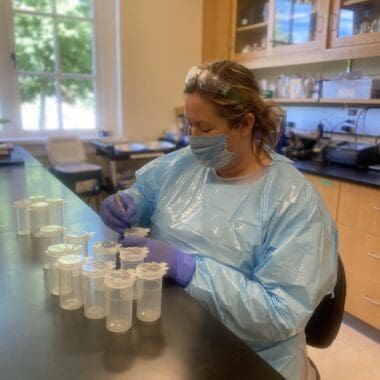
Wastewater surveillance has been applied to uncover virus outbreaks, provide information on drug consumption and vaccination uptake, and assess collective exposure to environmental stressors such as environment and food toxins. Collecting wastewater for analysis of chemicals and viruses shed by humans provides an unbiased, cost-effective, real-time view of a community’s health and can be a viable and important component of informing public health decisions. Research and applications of wastewater surveillance has surged in recent years to track trends in the SARS CoV-2 pandemic, yet the majority ofapplications worldwide occur in major urban centres with few applications conducted in rural and small-town areas.
In this study wastewater surveillance is applied in a small-scale wastewater system in Nova Scotia to test for the potential presence and abundance of the SARS-CoV2 virus and THC-COOH, a metabolite that is formed in the human body after cannabis is used. Grab, composite, and passive sampling methods are used to collect wastewater from the system and are analyzed with Real-Time Quantitative Polymerase Chain Reaction (q-PCR) to detect and quantify the presence of SARS-CoV2, and Liquid Chromatography–Mass Spectrometry (LC-MS) to detect and quantify the presence of THC-COOH. This study seeks to assess the ability for wastewater surveillance to detect virus presence and cannabis use in a small-scale wastewater system and identify key factors in the efficient, sustainable, and suitable application of wastewater surveillance in small communities to inform public health decisions.
Meghan Swanburg is working on this project for her Master of Applied Science degree. Meghan says, “I believe strongly in environmental stewardship and social equity and seek to bring about positive change in the world. Gaining knowledge in this area equips me with the tools needed to address the challenges and opportunities facing the world’s water resources”.


 Acadia University
Acadia University